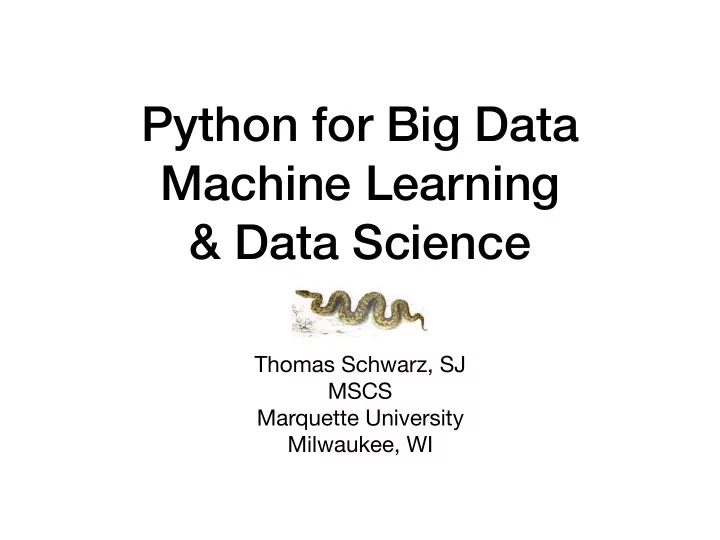

Python for Big Data Machine Learning & Data Science Thomas Schwarz, SJ MSCS Marquette University Milwaukee, WI
Why Python • Universal, accessible language • Clear and simple syntax • Python philosophy: The frequent should be easy • Made for reading • Used for fast prototyping • Excellent support community • Help for beginners and experts is easily available
Why Python • Universal Language • Serves many di ff erent constituencies • Examples: • Gaming: AI engine is usually in Python • String processing: Basis for digital humanities and data wrangling • Many extension modules • With scypy or numpy, fast programs for scientific programming • Use pyplot for good quality graphics • … • Notebooks based on Python (Jupyter) integrate presentation, data, and programs
Why Python • Python in Data Science
How to get Python • If you are already working in Data Science / Big Data: • You probably want a package such as Anaconda • We will use the simplest interface, because we want to learn Python first. • Python comes in two varieties: Python2.7 and Python3.x • We use the Python3.x family
How to get Python • Go to python.org • Go to download • Python will select the right 3.x version for your OS • Note: You will have python 2.7 already installed in MacOS, because it is used internally • This should install Python3.6 for you • The interface that we are using is called IDLE
Using IDLE • IDLE is written in Python using TkInter, one of Python’s GUI interfaces • Usually runs fine, be careful about non-latin characters • Interface depends slightly on the OS
IDLE • IDLE is an interactive Python interpreter • Can be used as a desk calculator • Allows you to create new files
Recommend
More recommend